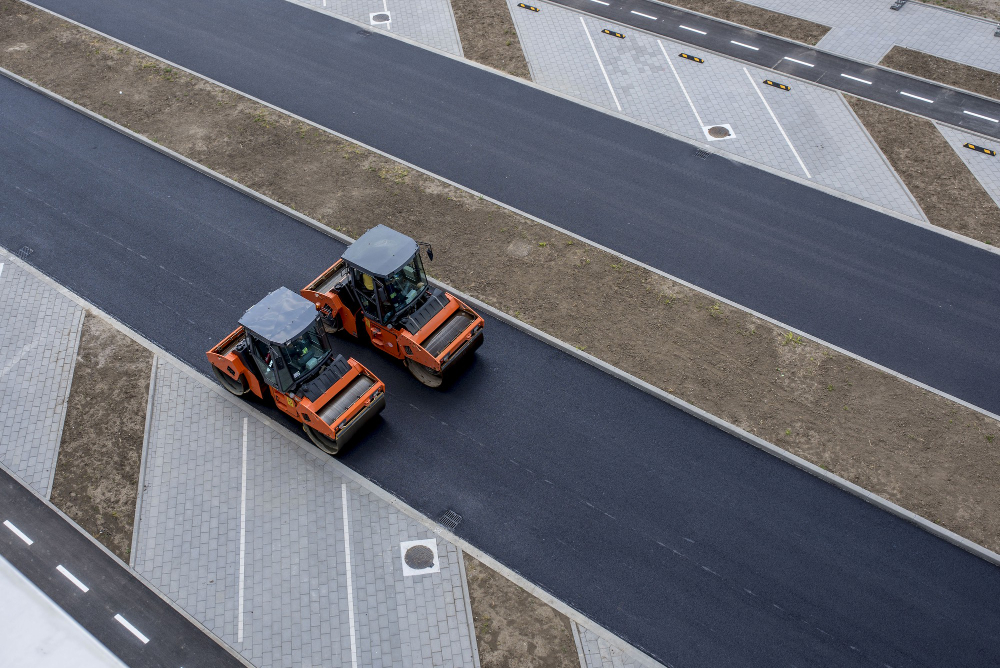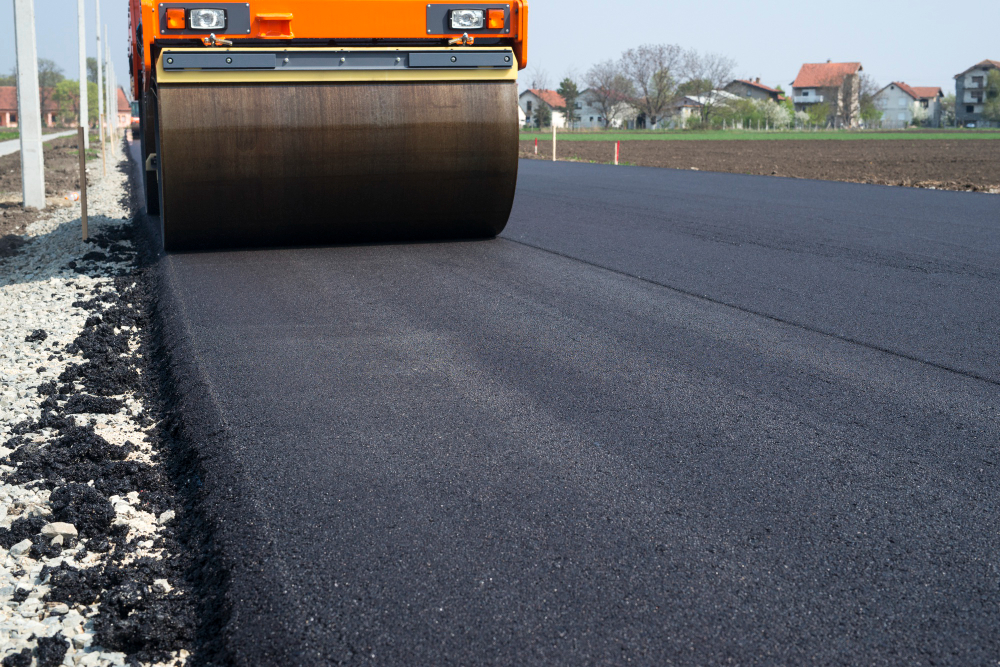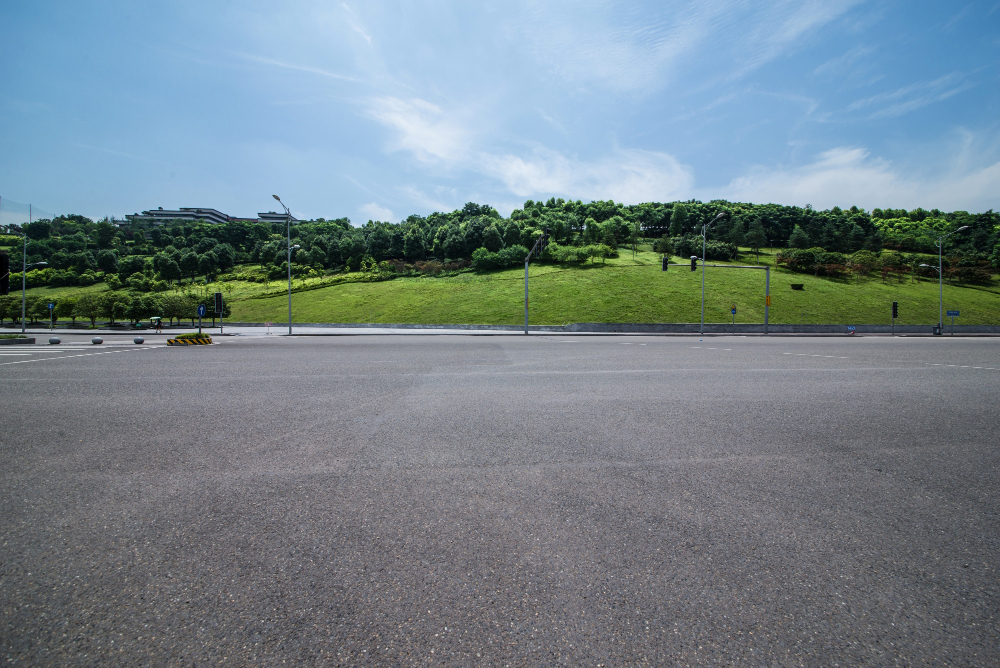
If you’re driving on a highway or waiting to board an aeroplane, chances are it doesn’t cross your mind how important the black pavement underfoot really is to getting where you need to be. Yet tarmac in Glasgow plays an essential role in getting you where you need to be every day.
Tarmac was first created by businessman Edgar Purnell Hooley in 1901 as an enhanced dust-free compacted stone macadam method introduced by John Loudon McAdam.

Durability
When driving down the highway or taking off from an aircraft, we rarely think much about the black paved surface underneath us—other than using it to travel between points A and B. However, this material offers much more than meets the eye; it also provides increased durability.
Tarmac is the modern form of bitumen. Bitumen is a petroleum product commonly used to construct roads and other infrastructure; it’s highly durable and can bear heavy vehicles’ weight easily, making it perfect for airport runways and roadways.
Tarmac stands out among road building materials because it is fast to dry and can be laid quickly over smaller areas. Additionally, it can withstand extreme weather conditions, including rain, snow, and heat, without incurring extensive maintenance requirements like other pavement materials do. Tarmac driveways make for great additions, as their ease of maintenance makes maintenance simpler than with some other paving materials.
Tarmac pavement offers another advantage by not soaking into the soil and becoming less likely to wash away over time. Furthermore, unlike other forms of paving material, it does not leak into waterways and negatively affect the environment like many types of pavers can.
Tarmac is an ideal material to use on airport runways as it can withstand the impact of planes taking off and landing, along with other activities carried out there. Plus, it’s simple to maintain, with no frost damage from freezing temperatures; plus, it can even be laid over existing surfaces, perfect for airports that must deal with lots of traffic.
Aesthetics

Aesthetics is of vital importance when selecting a paving material, as the surface of an airport runway or road can influence drivers, passengers, and travellers’ experiences.
Commercial spaces must reflect the professionalism and care for detail of businesses located there, and tarmac pathways provide an eye-catching contrast against various architectural styles.
Tarmac in Glasgow is an exceptionally flexible material to get, offering design flexibility across a variety of commercial settings. The smooth black surface suits modern and contemporary buildings equally well, while its classic aesthetic can also complement period properties with period features. Furthermore, tarmac’s customizable features, like contrasting edging, add extra personality and character.
Businesses catering to public visitors benefit greatly from utilising tarmac, as it provides unsurpassed levels of safety. As well as offering pedestrians a solid surface, wheelchair- and pushchair-friendly tarmac allows all types of visitors to easily access your premises.
Coloured asphalt surfaces offer businesses that desire an eye-catching aesthetic an effective solution. Not only can it create an eye-catching contrast against surrounding greenery, but coloured pavement also makes roads and pavements easier to navigate by marking out ight-of-way areas more clearly. Over time, however, its vibrancy may diminish; for maximum effectiveness, it should be maintained regularly to remain effective.
Flexibility
Tarmac used on our roads is durable yet highly flexible, making it perfect for commercial projects like industrial parks or car parking bays as well as driveways in residential settings.
Tarmac (or ‘tarmacadam’ as it’s often known) is a combination of crushed stone and sand held together with bitumen obtained as a by-product from crude oil distillation. Tarmac is heated up before being spread onto surfaces to be levelled and compacted, creating a strong, long-lasting road or pavement surface that has gained immense popularity due to its durability, strength, and resistance to weathering.
Tarmac pavement resurfacing material dries quickly following installation, so your driveway or road will be usable sooner. For large road resurfacing projects, this is an enormous advantage, as roads or pavements do not need to be shut down for extended periods, meaning less inconvenience for commuters and shoppers alike.
Tarmac can also be used in different climates, making it the perfect material for colder environments where frost heave or extreme heat may damage other materials. Yet even in warmer regions, tarmac will not melt during the summer or crack under heavy loads, making it the ideal solution.
Understanding the distinctions between tarmac and asphalt can be crucial, as their usage can often be confused with one another and lead to substandard material being used in your pavement project. Distress and wear issues typically manifest themselves first in intermediate or binding courses of pavement structures, so it’s crucial that preservation programmes can detect issues here before spreading to wearing courses.
Heat Resistance
Tarmac is an extremely durable material that can withstand even extreme weather conditions without suffering damage, such as hailstorms, heavy rainfalls, and thunderstorms. Furthermore, its maintenance requirements are minimal, so tarmac makes for an economical and simple choice when designing roads and driveways alike.
John Loudon McAdam created tarmacadam in 1902; today, it is more commonly referred to by its full name of tarmac. In its true form it is rarely used today and is often replaced by bitmac, which combines aggregates with bitumen from petroleum distillation processes.
Tarmac pavements are well known to be extremely durable and highly heat-resistant due to the ceramsite content in them, which creates an exothermic reaction and lowers surface temperatures, leading to cooler summer temperatures and warmer winter weather conditions. As a result, this material provides both comfort during warmer seasons as well as cooler conditions during colder times of the year.
Safety is another great advantage of tarmac, as its smooth surface provides excellent traction for both vehicles and pedestrians, helping prevent accidents or injuries, making tarmac an ideal material choice for road construction as well as airfield use.
Tarmac can be difficult to keep clean in shaded areas, requiring homeowners to regularly sweep debris from its surface and pressure wash it as part of their maintenance routine. Furthermore, homeowners should watch out for weeds or moss growing on their driveway that could pose an obstacle and safety threat for drivers.
Easy Maintenance
Tarmac driveway surfaces are generally easy to keep clean, aren’t subject to cracking or pothole formation, and can be repaired easily should damage occur, making tarmac an economical, hassle-free, cost-effective, and undemanding way of covering driveways.
Tarmac is an extremely durable material, making it perfect for parking vehicles on. While other surfacing materials could damage your car, tarmac can absorb shocks and heat without any adverse effects on its surface. Furthermore, this dense surface absorbs impact better than garden paving or asphalt due to its greater rigidity, helping absorb impact when moving vehicles are present.
Tarmac driveways can easily last two decades or more with proper care, making them an excellent long-term investment for homeowners. Conversely, other paving surfaces, such as asphalt, require regular maintenance in order to stay in top condition. In this regard, a drainage system must be set up so as to avoid standing water accumulating at its base, and sealant must be applied every one or two years to protect its integrity.
Driveways made with tarmac provide another advantage by not needing to be covered in thick weed membranes that quickly degrade and become slippery, but even so, they are still susceptible to moss and algae growth that could make your tarmac unattractive as well as compromise its structural integrity. If left alone for too long, however, these organisms could leave it unsightly while also damaging its underlying foundation.
Tarmac may not be to everyone’s taste aesthetically, but it can still provide an economical and low-maintenance drive surface option for drivers who value its durability, resistance to harsh weather conditions, and value to their property. Our quality paving contractors offer our tarmac services, should you be considering this as an option for installing your driveway surface.
